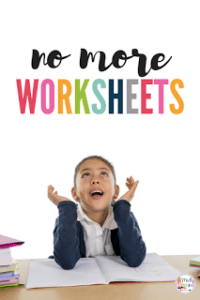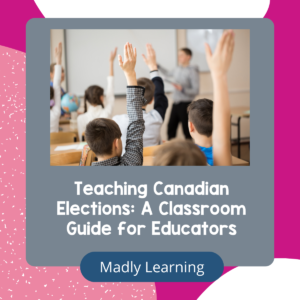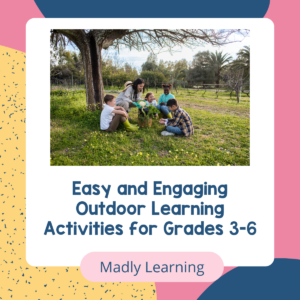
So what is the deal with all this hatred to the worksheet? It was recently asked on a facebook forum: does using worksheets in your classroom makes you the dreaded ‘old school teacher’. This sparked an interesting discussion. What the big deal is on worksheets? With schools pushing a paperless classroom in favour of digital tech and parents demanding an education for their children that reflects the familiar comforts of their own schooling. Teachers are put in the middle of a murky pond wondering how much is too much when it comes to our own worksheet usage.
What is a Worksheet?
For me, this idea of a worksheet goes back to my life as a student. It was the page that you completed after a lesson to prove you learned something or the questions that you answered after reading something. If you knew how to play the game, you could skip a few steps and simply just read enough to get the answers to the worksheet and simply forget the information the minute the page was fastened into your binder or duo-tang. These activities are low-level thinking; kill and drill type activities that allow teachers to get other things done while you sat in rows and worked quietly on your worksheet.
The reliance and use on worksheets increased as the technology improved from the hand written copied sheet on the ditto machine (I may have never used these as a teacher but I still remember the smell of freshly copied ditto paper) to the printed computer resource photocopied on a photocopier. I think as teachers we have to realize that the idea of a worksheet is the symbol used today for a lazy teacher that uses a worksheet to teach a concept instead of actually teaching. The worry is that if a teacher relies too much on these that they are not using best practices in their classroom.
I really don’t think that it is the piece of paper that is the problem. Instead, it is how that paper is used by the teacher that is the problem. As teachers, administrators, and coaches we really need to be careful about critically looking at what is on the paper to assess if what is on the page is the product of valuable learning. This is not to be used as a replacement of good teaching, and instead meets the needs of the students it is being used with. All paper is not bad….but a heavy reliance on paper products where students sit quietly and work while the teacher does other things may be. Ask yourself on a daily basis how much time do I spend spending in front of the photocopier.
What About TPT Resources?
I know you are probably thinking “but don’t you sell worksheets online through TPT?” or “your products are full of worksheets!” This is the largest complaint and criticism that I hear about TPT; That they are simply the new teacher store where lazy teachers get worksheets so they don’t have to actually teach anything. Admittedly, TPT is full of worksheets. But I do find that with a little bit of effort, you will find more than worksheets on TPT; and actually find the time-saving lessons and activities for your classroom.
Without good teaching, even the content of my lessons can be considered worksheets but with strong pedagogy and a teacher using best practices in their classroom the same piece of paper is transformed into real learning that no one should be ashamed of using. The problem with the worksheet is when the worksheet is used to replace the teacher.
There are times to use a worksheet and there are times when you shouldn’t. This is the list to get me to think about whether or not a worksheet is necessary. This is the list that I also use when making my products for TPT and when planning daily lessons for my classroom.
When to Use Worksheets
- To help to differentiate instruction. This way all students have the same page, but the task is differentiated to meet the various needs in your classroom
- To assist special education students in scaffolding their learning
- Does the worksheet help them to create, collaborate, or show critical thinking skills
- Is this the best way for students to show their learning
- As a consolidation of thinking after learning
- A place to record brainstorming, observations, analysis, evaluations, new thinking etc.
- Helps students to create their own understanding of a new concept. They have ownership in what they are doing
- Students are excited and engaged in their learning. They will remember this!
When Not to Use Worksheets
- The worksheet is the learning and students are regurgitating information without the need for critical thinking.
- It consumes the majority of your time on task or learning
- They follows the traditional pattern of “sit and listen – sit and work”
- It replaces good teaching by removing the teacher or others from the learning. It allows them to simply just turn off their brain. Learning should be collaborative, creative, allow for communication and critical thinking!
- Includes rote or low-level tasks such as answering closed questions, creating lists, fill in the blank, basic recall etc.
- Colouring
- The worksheet is unnecessary. It could instead be replaced with a more interactive approach to learning.
- It’s just busy work (word searches, colour by number, crosswords)
- Students could make it themselves. Many graphic organizers as worksheets are unnecessary, unless at the beginning of the learning stage as students progress. They then need to be able to create these on their own in notebooks in more authentic ways.
So, What Now?
At the end of the day, we all give out worksheets, even the bad kind. Because there are the days that this is what we need to do. However, we need to challenge ourselves to reduce the amount of worksheets we rely on. Instead, we need to up our game as teachers. Differentiate more, increase the complexity of the activity and critical thinking skills being used. Integrate technology, and hands-on learning opportunities more and increase student voice and choice in the classroom. Know what best teaching practices are and try to implement them in your classroom. Don’t look for the easy way out by simply relying on worksheets to do the work for you.
As teachers, we are professionals. We should constantly be looking for ways to improve our ability to teach the students in front of us. I use worksheets, and will continue to do so. But I think my takeaway from this is to use it as a tool sometimes, not all of the time.







